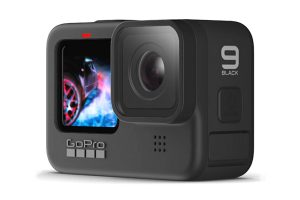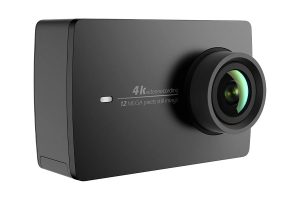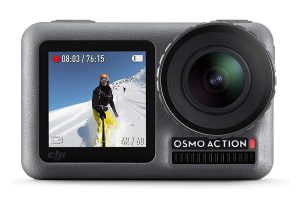The 7 Best Bike Camera for Cyclists in 2019
You’d probably have seen stunning video footage of many cycling videos out there on the Internet. Whether it’s an action-packed criterium race, your first grand fondo, or riding along a less-traveled road, on-bike cameras are perfect for capturing these moments.
Undoubtedly, the question is then, which camera is suited to be mounted on the bike?
On this page, I’ll be sharing with you not only my favorite bike cameras but more importantly the things you should consider before getting one. I have them (and more) covered in detail in the buying section below.
- Minimum of 1080p video quality. Prices of HD quality cameras have come down a lot in recent years, so that’s something you want to take advantage of.
- Image stabilization features to smoothen the jerky movements especially if you’re riding off-road.
- Wide field of view to capture both the action and surroundings.
Most of us don’t have a bottomless budget to spend on bike cameras. So it’s a fine balance between getting things right and prioritizing what you want in a bike camera that suits your needs, while not breaking the bank.
A Quick Glance : Our Favorite Action Cameras for Cycling
Value for Money Picks
DJI Osmo Action
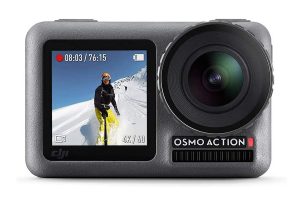
- Video Quality : 4K/60fps
- Field of View : 145º
- Screen Size : 2.25″ (rear)
Maximize your ability to film your cycling adventures with the DJI Osmo Action. This camera has a variety of features that allow you to maximize the footage you take while cycling or participating in any other adventure.
This includes dual-screen capability, which allows you to easily frame yourself while a back screen provides a clear display. Tired of bumpy camera footage? The Osmo’s Rocksteady cam eliminates all the bumps in your ride.
The DJI lens delivers an HDR video mode for super clear footage. And, with 4K/60fps, you can be sure that the camera will keep up with all the action your throw at it. Other cool features include slow motion, custom exposure settings, and time-lapse video.
- Pros : Value for money vs functions. Dual screen on the front, and rear.
- Cons : No GPS.
Yi 4K Sports Camera
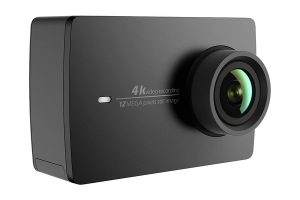
- Video Quality : 4K/60fps
- Field of View : 155º
- Screen Size : 2.2″ (rear)
The YI 4K Action and Sports Camera balances affordability with features. As the name suggests, this action camera is capable of 4K video at 30fps, 1080p at 120fps, and 12MP still images.
With video stabilization built-in, a neat touchscreen, hands-free operation with voice command, Bluetooth, and a ton of other features, it sure packs in the features.
The camera is small and light and comes with a Gorilla Glass Retina touchscreen. With Bluetooth and WiFi and a bunch of purchasable accessories, this camera is hard to beat at its price range.
- Pros : Prices affordably on the lower end for 4K cameras. Tough touchscreen made from Gorilla glass.
- Cons : Battery life for 4K recording below 1 hour.
Features Rich Picks
GoPro Hero 9
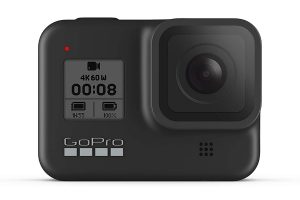
- Video Quality : 4K/60fps or 5K/30fps
- Field of View : 155º
- Screen Size : 2.27″ (rear)
The GoPro Hero 9 is here because of its 4K video quality. A couple of other action cameras in this list are capable of 4K video but not with the quality of the GoPro.
The camera is ideal for cycling, has image stabilization, hands-free operation, 12MP and HDR for still images, live streaming feature, time-lapse, slow motion, and lots more.
The unit is small, light, waterproof, and rugged enough for any kind of weather you’re riding in. At only 4oz, you will soon forget it’s there and with Bluetooth and WiFi, it has it all.
- Pros : Pioneer and reputable brand in the market. Amazing 4K video quality.
- Cons : Expect to pay a premium price.
GoPro MAX
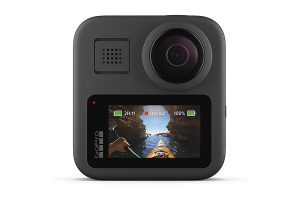
- Video Quality : 6K/30fps or 3K/60fps
- Field of View : 360º
- Screen Size : 1.7″
It’s hard to imagine an adventure camera with more capability than that eMAX. The GoPro MAX shows just how far camera technology has come since the first GoPros debuted in 2004. It packs some powerful features with three cameras in one with its Hero and dual-camera setting that allows you to capture 360º footage.
Features include Max Hypersmooth, which eliminates all the motion sickness-inducing bumps from cameras, and Max Timewarp, which lets you shoot motion time lapse
There are also plenty of editing features for making adjustments directly from the camera. It’s also waterproof and responds to voice-activated commands. The GoPro MAX connects to your smartphone via a mobile phone app that allows for advanced editing and sharing.
- Pros : Able to capture 360º videos. Functionalities can be voice-activated.
- Cons : Bulky size is not for everyone.
Bike Cameras with Lights Combo
Cycliq Fly12
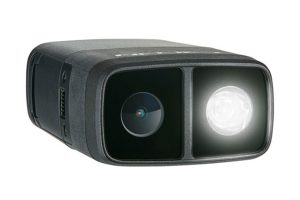
- Video Quality : 1080p/60fps
- Light Brightness : 600 lumens
- Weight : 195g
The Cycliq Fly12 is my choice for a bike camera with an integrated front light. It has improved massively over the previous model and is now an excellent option for cyclists.
The integrated front light ensures you are seen while on the road as well as lighting the shot for the video. With 1080p capability, image stabilization, ANT+, Bluetooth, and USB-C compatibility, it is a very versatile unit.
The quality of the build is excellent and it weighs 7oz. With an estimated runtime of up to 8 hours, longevity for longer rides isn’t an issue.
It isn’t the cheapest option but the ability to combine front light and camera offers lots of features.
- Pros : Dual ANT+ and Bluetooth compatible. Long battery life.
- Cons : Heavy and might not be compatible with 3rd party mounts.
Cycliq Fly6
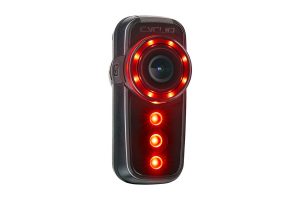
- Video Quality : 1080p/30fps or 720p/60fps
- Field of View : 135º
- Light Brightness : 70 lumens
- Weight : 77g
The Cycliq Fly6 is the companion to the Fly12 but this time with the integrated rear light. If you want to keep an eye on what’s behind you, this is the bike camera to get.
The camera is capable of 1080p at 60fps, has an ultrawide viewing angle of 135º, image stabilization, 7 hour battery time, looping video option, bike alarm, and more.
The unit has the same build quality as the Fly12. It’s slightly smaller and lighter at 4oz and has the same ANT+, Bluetooth, and USB-C compatibility.
- Pros : Improved sleek design with a very bright rear beam.
- Cons : Expect to pay a premium.
Cycling Camera Buying Guide
The more advanced something gets, the more complicated it becomes to choose between competing versions. Nowhere is that more true than in cycling cameras. With so many models from so many manufacturers, it will take a while to choose between them all.
In the section below, I’ll go through the important features you should look out for in a cycling camera.
Mininum 1080p Video Quality
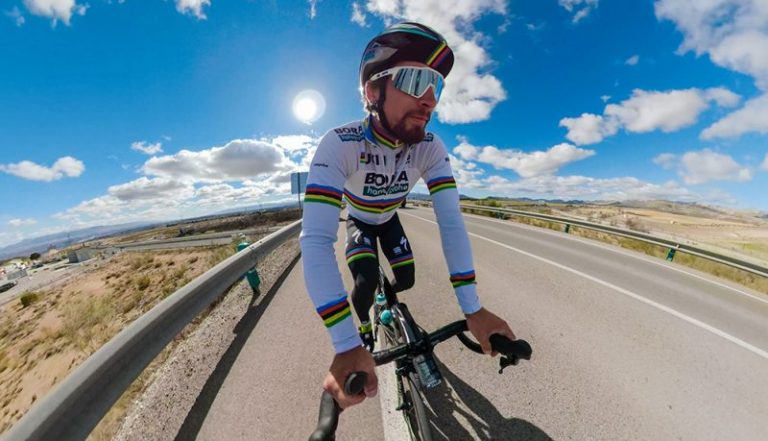
Typically, the more expensive a camera is, the better the image quality.
The minimum you would expect of a modern action camera is 720p but it is entirely reasonable to set a minimum of 1080p.
All of the cameras in this list are capable of 1080p as a minimum. UHD or 4K is also available but only worth specifying if you have a 4K monitor or TV to play it back on.
As most of us watch our footage on a smartphone or laptop, 1080p is a practical option for most cyclists. If you do have a 4K kit or want to future-proof your camera, 4K is the gold standard right now. One such example is the GoPro Hero 8 or the DJI Osmo Action.
If you ride for longer periods, you may want to skip 4K for now as it has a detrimental effect on battery life. As 4K requires more processing power to record, the battery has a lot more work to do. If you’re going to be out on your bike for a while, reducing the resolution to HD might be the order of the day.
The other side of video quality is frames per second or fps. This is a measure of how many frames the camera can handle each second.
A practical minimum is 30fps as this is the speed of many TVs. Higher fps, such as 60fps in some of the cameras here offer a much smoother video with less blurring.
Image quality is also important if you want to take stills with your camera. Video is great but sometimes it doesn’t tell the whole story. Some action cameras don’t take stills while others do. It isn’t their primary function so the camera won’t have many of the features of a smartphone or dedicated camera.
GoPro has a stills camera and the two in this list are capable of 10 or 12 megapixels (MP). That’s plenty enough for an action or landscape shot!
Geek Tip : Aim for bike cameras with at least 1080p and 30fps capabilities.
Image Stabilization
Image stabilization is a feature on most action cameras we use for cycling.
The technology will use either gyro image stabilization or optical image stabilization to even out the video to make it smoother and remove some of the jerky movements you may endure while out on your bike.
The gyro uses an electronic movement sensor to eliminate camera shake while optical stabilization movers the lens to counteract the movement. Neither is better than the other though.
If you ride rough roads or trails, some kind of image stabilization can make the viewing experience a much smoother affair!
Geek Tip : Image Stabilization will ensure you get to record better videos while cycling.
A Wide Field of View
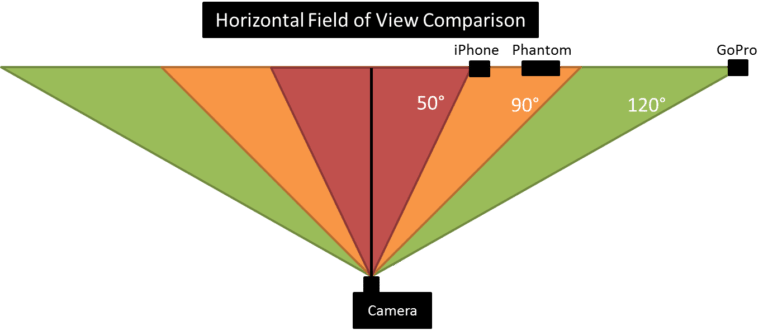
You may notice the field of view being mentioned in some camera descriptions. The Field of View (FoV) is measured in degrees from the front lens. So an FoV of 140º means the camera will pick up the image 70º on either side, up, or down from the lens.
Field of view can impact the quality and immersion of a video by including more of the surroundings.
If you are using your action camera for cycling safety, it will also include more of your surroundings and cover more angles of the road.
Geek Tip : The wider the FoV, the more the video covers. Aim to have at least 120º of view.
Ease of Use on the Bike
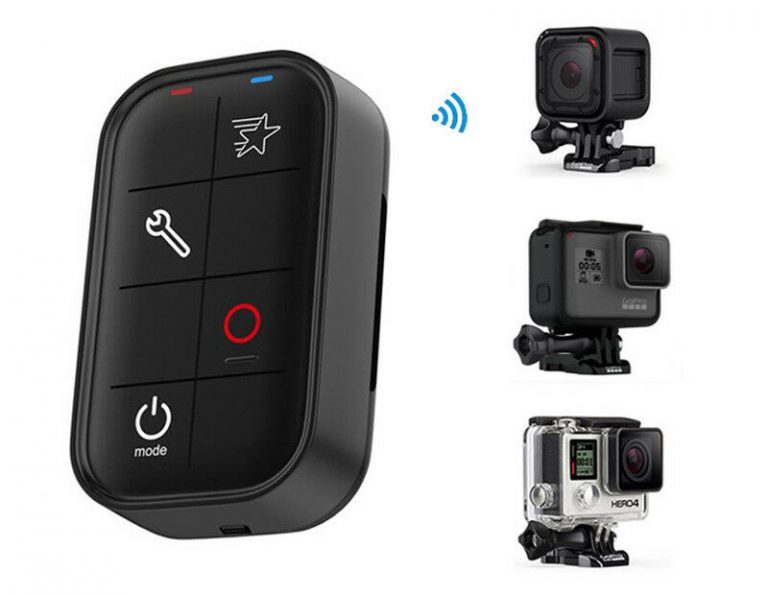
Ease of use in the context of action cameras refers more to how easy it is to use it while on the move or while wearing gloves. Whether you’re turning the camera on or off, take a still image, or make quick changes while on the bike, the buttons have to be easily accessible.
Some action cameras come with the hands-free operation or an optional remote such as those from GoPro.
This can also mean simple voice commands can control the camera without your hands ever needing to leave the bars. If you think you might be adjusting your camera or will need to make changes on the fly, this could be useful.
Otherwise, cameras are usually set and forget. Set your selected mode, set it to record and let it run until you finish.
Enough Battery Life for Long Rides
Battery life is a sticking point for most action cameras.
The demand for smaller, lighter cameras with ever more detailed images means batteries are always going to be under pressure. Battery technology lags behind all technology right now so our options are very limited.
You can reasonably expect a battery life of between, 2 and 8 hours depending on how you use it. Most manufacturers give you an average expectation but don’t count on it.
Geek Tip : Consider a bike camera with user-replaceable batteries if you’re planning for a long video shoot session when out riding.
Connectivity Options for Data Transfer
Some high-end action cameras include WiFi, Bluetooth, ANT+, or near-field communication (NFC). While not essential for normal operation, having these connectivity options enables you to watch or live stream your ride or connect it to other devices.
WiFi, NFC, and Bluetooth can connect your camera to your phone and from there to cloud storage or social media. ANT+ can connect your camera to bicycle computers, heart rate monitors, and other sensors you may have on your bike.
None of these are strictly necessary but if you have compatible accessories, they can offer another dimension to your movies.
Read More : Wahoo Elemnt vs Bolt vs Roam – The Differences Explained
Size and Weight - Not too Bulky
Whether you ride road or mountain bikes, are a weight weenie or not, the size and weight of your camera will have an influence over the user experience.
Firstly, size and weight can dictate where you mount it.
Heavy cameras will not sit well on a bike helmet while larger ones may affect how comfortable you are using it. The Yi 4K is a good example of a lightweight bike camera.
Frame or bar mounted cameras are less influenced by size and weight but you still don’t want a big, heavy camera making your bike look ugly.
Various Mounting Locations
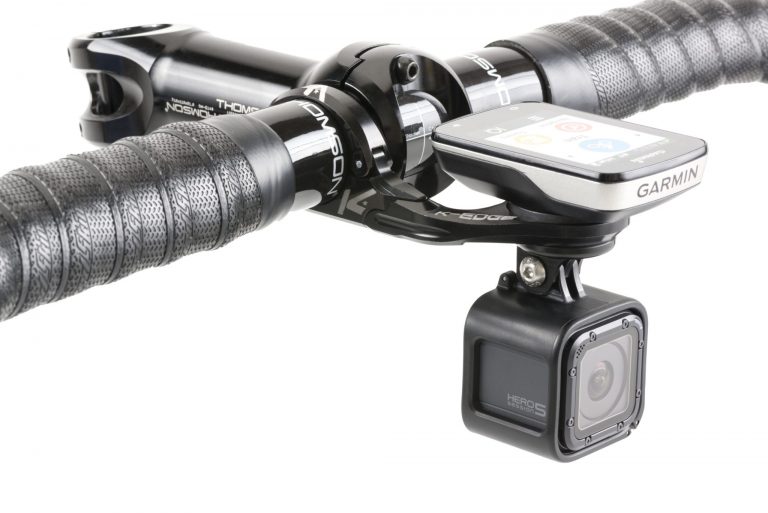
There are two main mounting positions for an action camera in cycling.
- Helmet mount offers a much more immersive cycling experience for the viewer as the angle changes with your head and the POV is much more engaging.
- Bike or bar mount offers a less engaging but much more stable view. You may lose the shock absorption of your body but your view won’t move with every shift of your weight on the bike or pan the shot every time you look around.
Mounting location comes down to personal preference. There are so many options out there for all kinds of cameras that you can pretty much mount it wherever you like.
Waterproofing Capabilities
Bike camera waterproofing is a value-add feature for cycling.
Most bike cameras will survive a light splash or a little rain but need protecting from more. Some cameras are inherently waterproof and will come with a specific depth capability. The GoPro Hero 9 for example is waterproof up to 33ft.
If the camera itself isn’t waterproof, you can buy waterproof cases as accessories. These will add weight and a little bulk but are often cheaper than spending the extra for a waterproof camera.
Optional Built-in GPS
GPS is another optional extra.
It means the camera can geotag your stills and video and show exactly where you were when you recorded it. The GoPro Hero 9 has GPS built-in and allows you to overlay some of that data onto your video. You can add speed, location, or altitude to add another dimension to the video.
If you have a compatible bike computer, you can sometimes overlay other data too. Use a Garmin Virb and a Garmin bike computer and you can add heart rate, temperature, and other metrics to an overlay on the video too.
Enough Storage Space
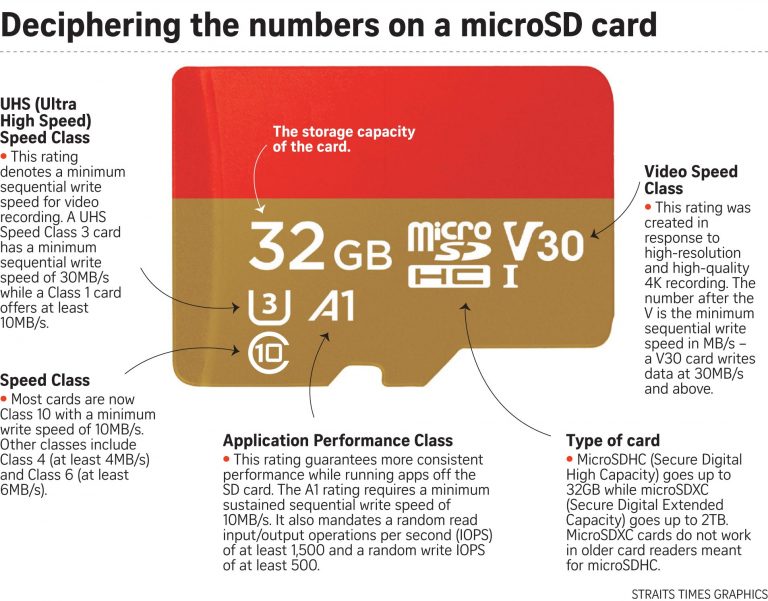
Most bike cameras use microSD cards to store your footage.
Some cameras can be finicky about the cards they are compatible with while others will only work with limited sizes. Some cameras will not work with such large cards while others will.
If you think you will be storing a lot of footage, from a multi-day event, for example, using a larger microSD card is more practical than carrying multiple cards in your jersey pocket.
As you can see, there is a lot to choosing action cameras for cycling. At least now you should have a good idea of some of the best around right now and what to look for when doing your research!
Geek Tip : You’d want a Class-10 microSD card at sizes around 128GB and above.
Author Recommended Reads

